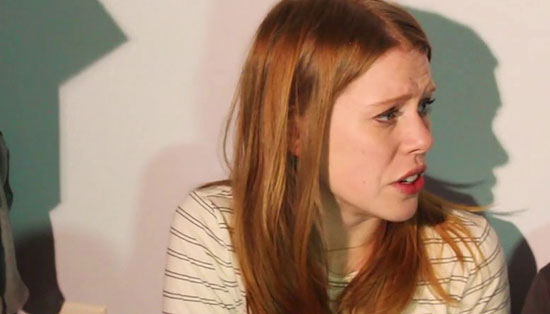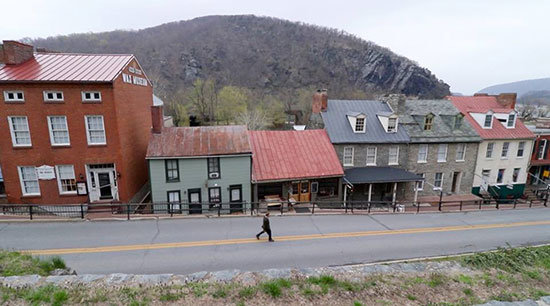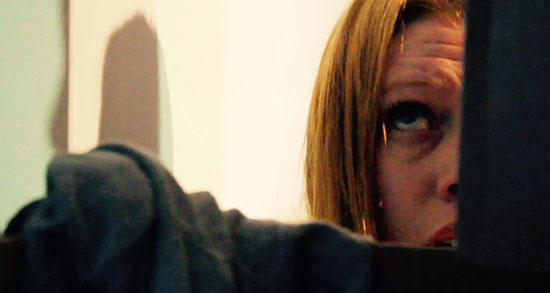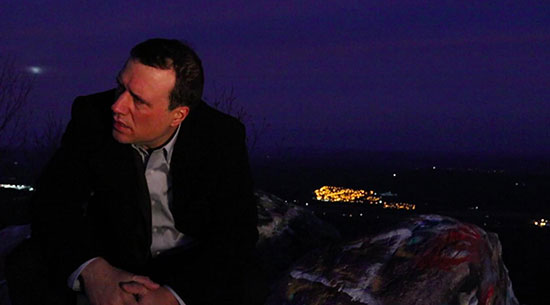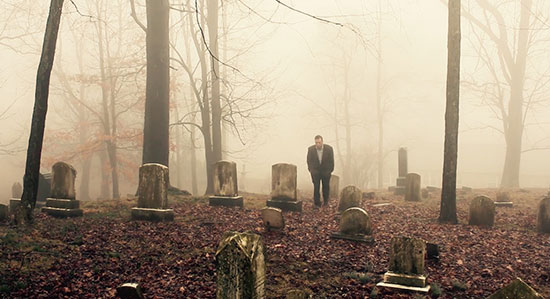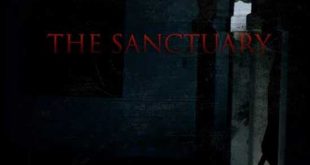SYNOPSIS:
REVIEW:
Alcoholism, miscarriages, PTSD. Sounds like prime fodder for a Hallmark tv movie marathon, right? Except when its completely wrapped in a horror film about Satanism in Appalachian country. Now, normally, any genre film that opts to become more than standard chiller as to offer commentary on human social mores and personal frailties is to be lauded.
That is, unless the focus on the secondary subject matter comes merely as accidental happenstance due to a script and story that do not know what they want to be and editing that is at once hyperactive and clumsy. Don’t Let the Devil In, from director Courtney Bell for Show Video Productions and Vortex Video, has much ambition that, unfortunately, is completely let down by poor execution.
John and Samantha Harris are the ultimate dysfunctional couple. Both are grieving over a recent miscarriage and he suffers from Post Traumatic Stress Disorder and is a seeming hopeless alcoholic. In hopes of saving their crumbling marriage, John takes an offer from his land developer employer to oversee construction of a casino in the small town of Frostburg, Maryland. What they don’t know is that a powerful, evil presence has long taken residence there and draws the couple into a battle for their very souls.
Though Bell contributed some as one of three directors (along with Dylan Greenberg and Reverend Jen Miller) for Troma’s very fun 2016 comedy-horror effort, Werewolf Bitches From Outerspace, Don’t Let The Devil In is his first solo try and his newness shows. Especially as it pertains to nuance and meshing of multiple themes. I did like his nods to genre auteur greats such as Argento and Sergio Martino (for a first-timer, I was nevertheless impressed at his grasp of the wordless visual that Argento and Martino worked with ease), and his name drop in-joke insertion of Dr. Abe Saperstein (fans of Rosemary’s Baby will get the reference). Yet, even the maestro Dario would tell you the critical importance of connecting image-heavy scenes into a loose, semi-linear narrative. Bell’s idea of editing finesse seems to be to put everything into a blender and select puree.
The film starts as personal drama involving soul-searching and psychiatric couches, shifts wildly into a Race With the Devil-like Satanism in a small hamlet storyline, then on to a Lost Weekend alcohol binge segment, and finally veering back for a gore-tinged sacrifice ritual. By opting for the many layered approach and failing to pick one focal point, Bell ultimately (well, with a small budget playing a role as well) offers not the meat needed for either plot to completely succeed.
On the plus side, the location shooting in New York City, Frostburg, Maryland, in Marion and Mattapoisett, Massachusetts, and in West Virginia really do add a rustic, old world vibe to the proceedings and even a decadent chill or two. The home the Harris’ stay in can be added as yet another dwelling elevated to its own sort of character status with a creepy basement and surrounding forest playing prominently in the events.
Bell, like most other first-time low budget creature show filmmakers, gets the first rule of horror movie production right: finding just the right milieu for the terror shenanigans. Turning the local church into the meeting place for the Satanists and its ironic contrast of idyllic, bright exterior with dimly lit and dank interiors was a nice allusion to Hammer Films entries of years gone by.
Not helping the jumbled script are the stolid performances of the cast. Marc Slanger and Jordan Lewis as the lead couple, each deliver incredibly monotonous and one note performances. Of the supporting cast roster, there are only two standouts of note: an amusing bit by James Warnier as the local law enforcement representative, Officer Suzanne (who seems to be around merely to tell John “we won’t do a damn thing to help you and you really should leave before things really hit the fan.”) and a cameo by Ed Wood alum and Plan Nine From Outer Space vet Conrad Brooks in his final film appearance. Brooks was more of personality than actor, to be honest, but his few minutes outshine the rest of the cast and are most welcome.
Don’t Let the Devil In gets high points for trying to be more than it is. Genre moviemakers should never be faulted for having ambition, and Courtney Bell has no shortage of that if this initial piece is any indication. If you are simply looking for an 85 minute collection of visuals, some gloriously lacking in verbiage, this addition to the B canon would be right in your blood-spattered dungeon. The jaded critic in me was just left wanting a bit more.
 Horror News | HNN Official Site | Horror Movies,Trailers, Reviews
Horror News | HNN Official Site | Horror Movies,Trailers, Reviews

